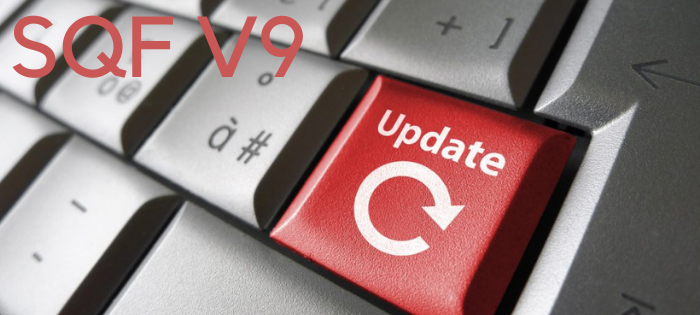
Food Safety
Comments: No Comments
The Safe Quality Food (SQF) Program is a rigorous food safety and quality program. Recognized by the Global Food Safety Initiative (GFSI), the SQF codes are designed to meet industry, customer, and regulatory requirements for all sectors of the food supply chain. SQF certification showcases certified sites’ commitment to a culture of food safety and operational excellence in food safety management.
In May 2021, SQF will be releasing Edition 9 (SQF V9) to align the code with the latest GFSI benchmarking criteria, updated regulatory requirements, and scientific changes. According to the SQF Institute, SQF V9 is designed to help certified sites meet and exceed all industry, customer, and regulatory requirements so they can remain competitive across sectors. V9 is scheduled for implementation with audits beginning May 24, 2021.
Significant Changes
The SQF V9 changes are broken down into two categories of changes:
Structural Changes
- Development of Custom Codes for certain industry-specific sectors (livestock, animal feed, petfood, aquaculture, dietary supplements)
- Streamlined technical elements to reduce redundancy in the following sections:
- Site location and operation
- Food safety culture
- Chemical storage
- Personal hygiene
- Specifications
- Training
Technical Changes
- GFSI benchmarking requirement updates, including changes to:
- Food safety culture requirements
- Internal laboratory requirements
- HACCP plan requirements for storage and distribution
- Remote activities requirements
- SQF stakeholder feedback updates, including changes to:
- Co-manufacturers’ requirements
- Ambient air testing requirement
- Audit scoring
New or updated concepts that present some of the greatest changes under SQF V9 include the following:
- Food Safety Culture Requirements: Senior leadership is required to lead and support a food safety culture within the site.
- Additional Training Requirements: Training requirements are now defined for sampling and test methods, environmental monitoring, allergen management, food defense, and food fraud for all relevant staff.
- Labeling Requirements: Updates to Product Identification Section now emphasize labeling requirements and checks during operations and require the implementation of procedures to ensure label use is reconciled.
- Substitute SQF Practitioner: All sites are now required to have a designated substitute SQF Practitioner with HACCP training and competencies in maintaining the food safety plan and knowledge of the SQF Food Safety Code.
Planning for Change
For companies that are SQF-certified, now is the ideal time to assess current SQF program elements, identify improvements that are internally desirable and required by the new standard, and implement those updates that will make the SQF program more useful to the business. This can be done through a series of phases to ensure adoption throughout the organization.
Phase 1: SQF Assessment
An assessment should begin by reviewing the following:
- Existing SQF programs, processes, and procedures
- Existing document management systems
- Employee training tools and programs
This documentation review and program assessment will help to identify elements of the existing SQF program that are acceptable, those that show opportunities for improvement, and those that may be missing, including those needed for development and implementation to meet the requirements of SQF V9.
Phase 2: SQF Program Updates
The assessment will inform a plan for updating the SQF certification program, including major activities, key milestones, and expected outcomes. Development/update activities included on the plan may include the following:
- Updating current SQF programs, processes, and procedures with missing V9 requirements
- Developing new SQF programs, processes, and procedures for additional V9 requirements
- Updating training programs with any new and additional requirements
- Revising document register to align with SQF V9 numbering changes
- Updating records and forms with any new and additional requirements
- Updating Food Safety Policy to include new food safety culture requirements
When implementing program updates, leveraging existing management system and certification program elements and utilizing proven approaches can greatly streamline the process.
Phase 3: Training
To ensure staff are prepared to implement and sustain the updated SQF V9 program, training is important. This includes training for affected staff on applicable requirements; specific plans, procedures, and GMPs developed to achieve compliance; and the certification roadmap to prepare for future audits.
Following this plan now will help companies ensure they maintain their SQF certification when audits begin under SQF V9 in May 2021–and that certification matters when it comes to meeting customer and regulatory requirements, protecting the company brand, and keeping consumers safe.
